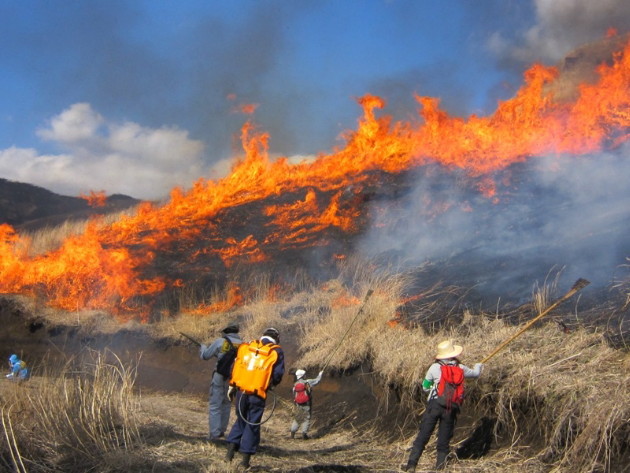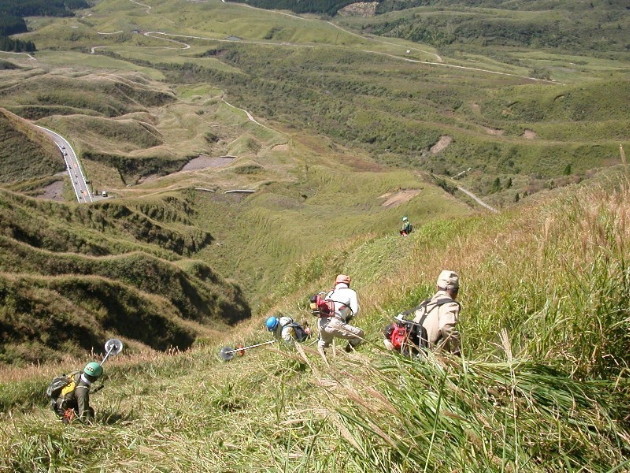To rejuvenate Aso grasslands around caldera
Aso region spreads around active volcanic craters and huge caldera, whose circumference is as long as 128 kilometers (one of the world’s largest). The vast grasslands (as large as 22,000 hectares) and grand landscapes provide agriculture, grazing, mowing (for fodder) and tourism fascination. Aso-kuju National Park has been designated since 1934, and a part of the Japanese Geoparks Networks since 2009. The region is gifted furthermore with hot springs, famous sightseeing spots and etc., such as Nakadake active crater visit and Daikanpou view spot, attracting 17 million tourists annually.

In 2013 , the Action plan "Managing Aso grassland for sustainable agriculture" was designated in the Globally Important Agricultural Heritage Systems( initiated by FAO of the United Nation).
 This suggests the plan is important not only to conserve sustainable agriculture (including indigenous vegetables), biodiversity (harbored in the grasslands), and preservation of specific and unique landscapes in the region but also to succeed them to younger generations.
This suggests the plan is important not only to conserve sustainable agriculture (including indigenous vegetables), biodiversity (harbored in the grasslands), and preservation of specific and unique landscapes in the region but also to succeed them to younger generations.

(photo : Aso Green Stock)
As for supporting grassland managing, activities and contributions of a general public, which conducts field burning (Noyaki) or mowing for firebreaks (Wachigiri) where many people participate as volunteers, have been highly evaluated.
(by a members of Fukuoka SGG Club / Dec.30, 2013)

(photo : Aso Green Stock)


